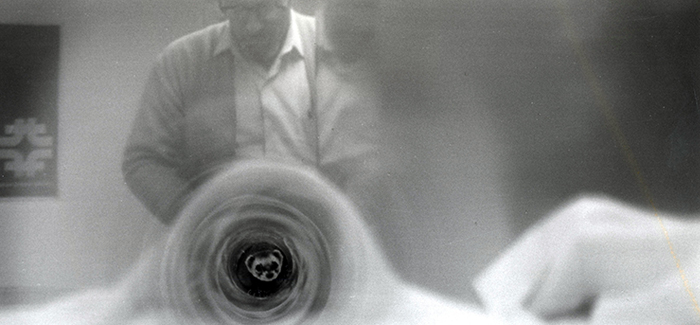
(Photo courtesy Fermilab History and Archives Project)
Scientists turned to nature to solve a high-tech problem.
What do particle physicists and English poachers have in common? They both used ferrets to do their dirty work.
In 1971, Fermilab, then called the National Accelerator Laboratory, was constructing its Main Ring proton beam, welding together pipes that would eventually form its four-mile path. These vacuum tubes needed to be spotless before physicists could send elementary particles zooming through them, but they were littered with dust and specks of steel.
Mechanical designer Walter Pelczarski was tasked with developing a pipe-cleaning method, but it was visiting British scientist Robert Sheldon who devised a possible solution. He remembered that poachers used to send ferrets—who naturally seek out holes and burrows and can silently evade gamekeepers—after rabbits on English estates.
For $35, NAL purchased a 15-inch-long female ferret (chosen for her small size, even for a ferret), and trained her to scurry through 300 feet of pipe, carrying a string attached to her collar. When she reached the end of the tube, technicians tied a swab doused in chemical cleaner to the string and pulled it back through, sweeping the pipe of all debris.
Felicia, as she was lovingly called, became a local, national, and international sensation—appearing in newspaper stories, Time magazine, and on television and radio. Unfortunately, as the pipeline grew, the length exceeded Felicia’s capacity (or willingness), so engineer Hans Kautzky invented a robotic mechanical spear that pulled a magnetic cord through thousands of feet of vacuum tube. He called the device a magnetic ferret, and Felicia retired after about a dozen runs.
